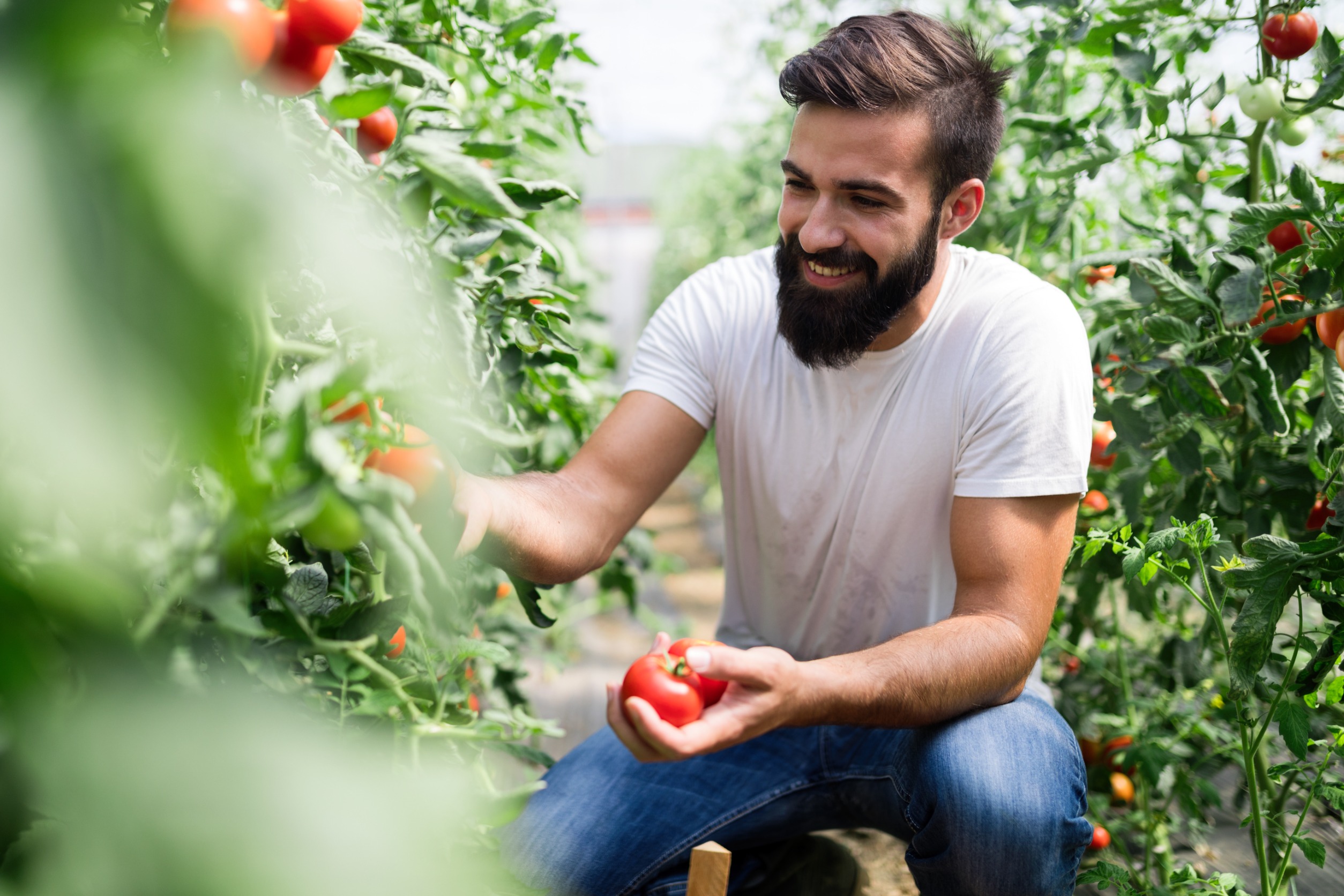


A fresh garden tomato delivers a taste that is out of this world. You remember what that store bought tomato tasted like in January? Us too, which is why we’re so excited to get started on some gorgeous tomato plants. To grow juicy, full-flavored tomatoes, we offer these great tips.
First, start off by rotating where you plant your tomatoes each year. If you like to plant in containers, don’t use the same soil year after year. Tomato plants are highly susceptible to soil-borne diseases, and when you plant them in the same spot, it makes it easier for them to get tomato blight or other diseases. Once this happens, the disease can stay in the soil for over five years. Rotating the plant location will instantly help prevent blight and disease. In containers, change your soil each year. For raised beds, avoid planting tomatoes in the same spot for at least three years. Rotation also helps with pests. If pests see the same plant each year, they’ll make their home right below it, and you’ve just given them a free buffet. Another reason to rotate tomato plants to provide a fresh supply of nutrients to the plants.
When it’s time to plant your tomatoes, give them a calcium boost right away. Black rot and blossom rot are two common issues with tomatoes, and they’re both caused by a lack of calcium in the soil. A free and easy way to do this is to crush up eggshells and add them to the hole you’re placing the plant in. If you still see issues as your tomatoes grow, you can add more shells or coffee to the surrounding soil, but there are also products you can buy specifically for this problem.
Mulching your plants not only helps keep weeds at bay, but it also helps to grow healthy tomatoes. It helps regulate soil temperature, retains moisture for the roots of the plant, and adds a layer of protection from soil-borne diseases. You will also want to prune the plants, taking care to keep the bottom of each plant trimmed up to about six inches from the soil line. This helps light to reach the plant and keeps mold and fungus at bay. As you prune, remove foliage that is showing signs of disease or injury.
Even if your soil is good at the beginning of the season, it will likely need a boost with some fertilizer throughout the growing period. If the soil runs out of nutrients and energy, your plants will too. Compost is great for applying around the base of the plant or you can choose an organic liquid fertilizer every couple of weeks. It seems to be better to give plants a little bit regularly than a couple big doses.
Finally, when the season is over, be sure to clear out the tomato plants (and all your other vegetable plants). If you let old plants sit all winter, it’s a good invitation for disease and pests to come along. To get your tomato plants off to a good start and to keep them thriving, visit The Dirt Bag for healthy soil additives and mulch.